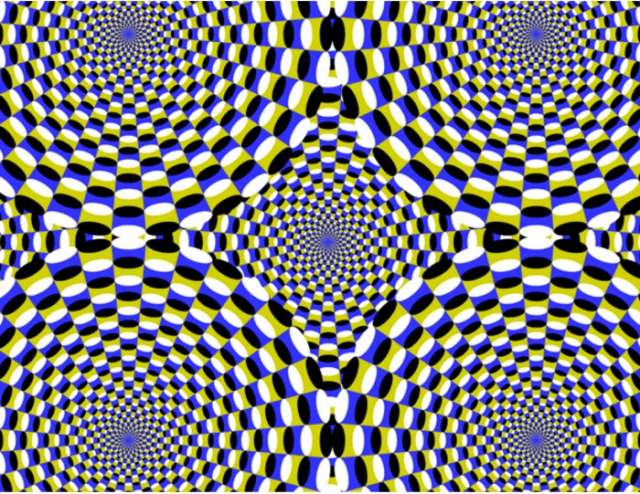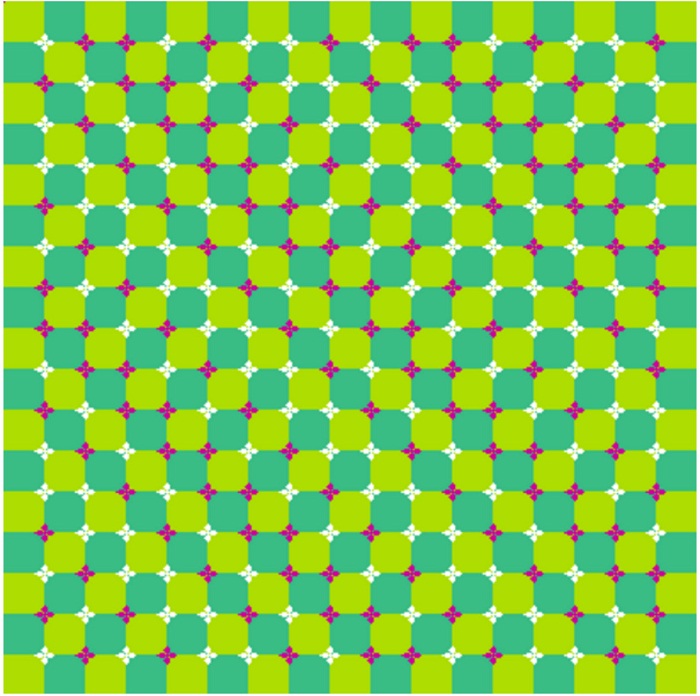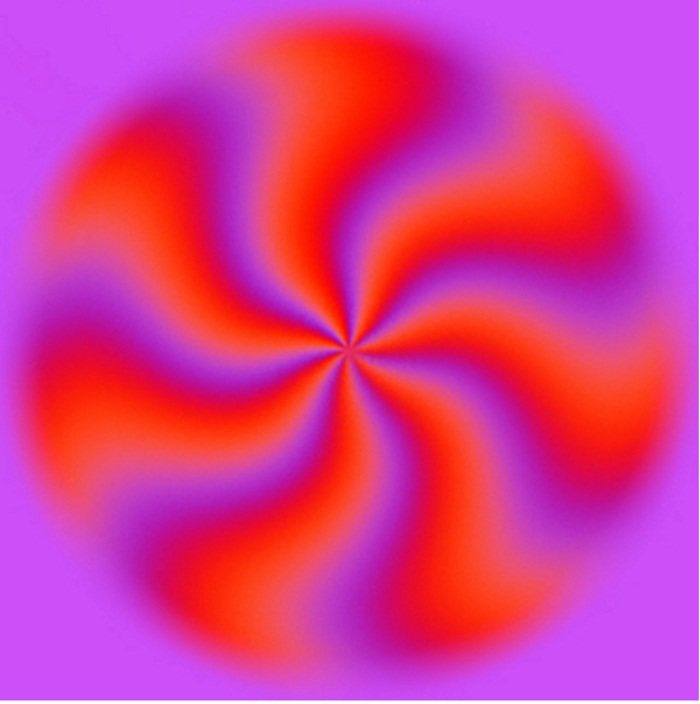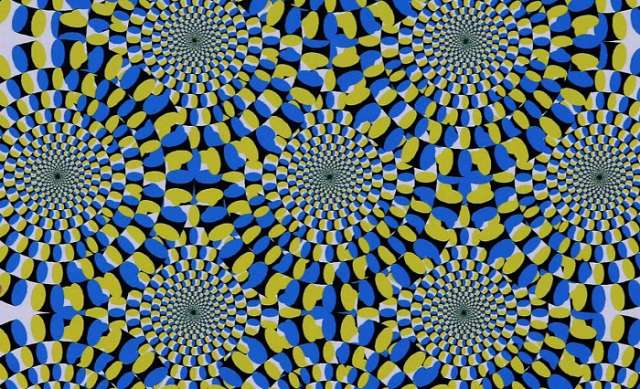Scientists have come up with a number of theories that could explain why our brains interpret certain images in that way.
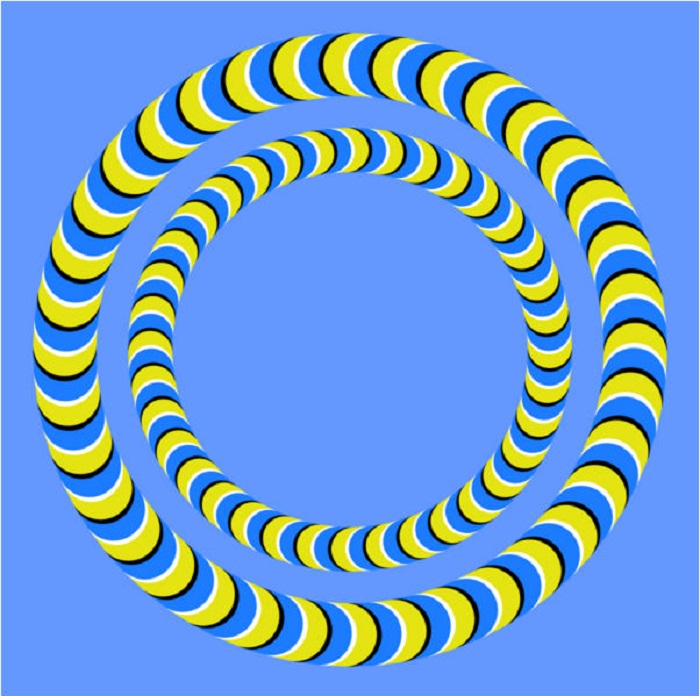
Although the eye is essentially a tiny camera, it does not record images of the world. When light hits an object, it is reflected and enters our eyes.
Optical illusions subvert this idea and trick our brains into seeing something that isn’t there, and because our minds are constantly perceiving reality, an optical illusion becomes a form of reality.
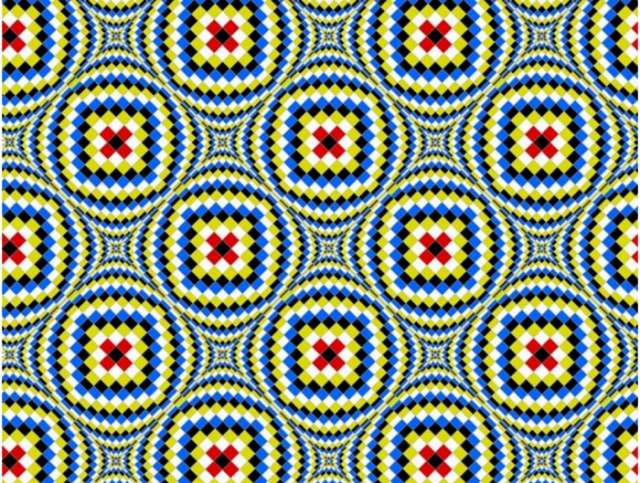
Mark Changizi, a neurobiologist and assistant professor of cognitive science at Rensselaer Polytechnic Institute in New York had a slightly different theory. Speaking at a Ted-Ed talk, he said:
Our brains are slow.
What you would like is that when light hits your eye you immediately have a perception of what the world is like. But it doesn`t work that way: it takes about a tenth of a second for your perception to be created.
All of our perceptions are always trying to be about the present but you have to perceive the future to in fact perceive the present.
These illusions are failed perceptions of the future because they are just static images.
So basically, the following images could be your brain attempting (and failing) to see into the future:
